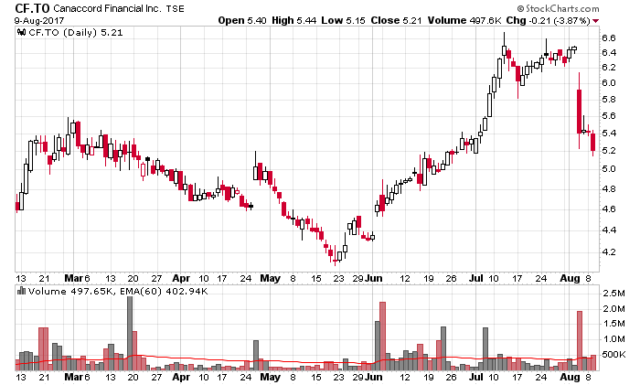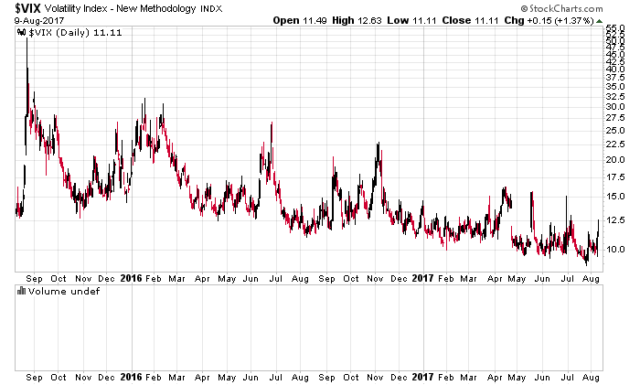Globe and Mail had an interesting article on the advent of Robinhood.
Robinhood is not currently available in Canada, but I’ve seen enough videos to come to an easy conclusion – it is the financial brokerage equivalent of crack cocaine.
There’s two items I’d like to discuss. One is commission-free trading, and the other is the psychological aspects of trading.
Robinhood allows commission-free trading of various products. The company’s business model makes money on payment for order flow, where the entity sells order flow to market making entities (such as Virtu – VIRT on the Nasdaq). The market makers execute on the trades and they pocket money buying on the bid, selling at the ask, and also making some informed speculation on the very short term future prices of securities depending on the order flow coming in (which is why you tend to see discontinuities on intraday trading – it is the market maker pulling away from the bid when there is a crush of supply pressure or pulling away at the ask when there is a crush of demand pressure).
For each share of stock traded, Robinhood made four to 15 times more than Schwab in the most recent quarter, according to the filings. In total, Robinhood got US$18,955 from the trading firms for every dollar in the average customer account, while Schwab made US$195, the Alphacution analysis shows.
I would suspect this magnitude difference (US$18,955 for a Robinhood dollar to $195 for a Schwab dollar) is a mis-print, but the 4-15 times magnitude of payment for order flow would intuitively sound like it is in the ballpark – reflecting the fact that customers purchase the most profitable type of items (call and put options) with large spreads. A market maker isn’t going to make much money if you buy 100 shares of Microsoft, but if you purchase 50 call options of some medium-capitalization security, it is virtually guaranteed that they will be paying at least a 25 cent (if not 50 cent or 1 dollar) spread on the trade.
In essence, there are two components to the cost of a trade. One is the commissions and fees associated with the trade – and for the most part, this is fairly transparent. The other less transparent cost of trading, which is much higher than the commission, is the slippage you pay for execution. If you want immediate execution, you must pay the spread. This is more costly than most commissions unless if you are trading the most liquid of securities.
There is a more subtle aspect to trading which applies when you have to take larger positions in companies, and that is how to acquire enough of the stock without materially impacting the stock price, but this is usually an institutional concern. This concern does sometimes happen at the retail level, especially in lower capitalization/volume stocks (e.g. my frustrations with trading Torstar, where it didn’t take much money to affect the stock price!).
So as a result of Robinhood’s price structure, they have an incentive to have their customers trade as much as possible, and ideally trade securities that will generate higher payment for order flow margins (i.e. high bid-ask spread options, especially multi-leg option positions such as Iron Condors!).
As a result, they make trading as easy as opening up an app on your iPhone and tapping a few keys and you’ve suddenly made a trade. You can trade on the bus, trade in bed, trade at the gym, etc, etc.
Clearly they’re trying to turn it into a legalized version of casino gambling, without telling the consumer that the expected value of their transactions are probably going to be higher at a casino.
So this leads me to the second item of this post, and this is psychology. There is a book called Nudge which you should read and Robinhood employs many of these tricks.
Just viewing the plethora of Youtube videos of people “minting coin” (e.g. “How I Made $30,000 in 1 Week Stock Trading on Robinhood“), and the general “millennial” attitude of these market participants, makes it definitely a herd mentality atmosphere, coupled with the “missing out” psychological sentiment – other people are making money, seemingly by tapping buttons on their phone in bed, why can’t I??? Robinhood couldn’t purchase this type of marketing. Contrast this with Interactive Brokers, where you get some very dry videos that few people in relation will click on.
The other phenomena is the advent of more sophisticated “trading rooms”, which has existed since the dawn of time (yes, pre-digital world), where people with their Robinhood accounts can band together to pumping up securities and purchasing and selling the hot tip of the day, just like a huckster at a horse racing track. There is so much rich history in herd mentality in stock trading that it would fill volumes, but for example, I’m going through a book called “Memoirs of Extraordinary Popular Delusions and the Madness of Crowds“, which was published in 1841, and its first chapter is about after Louis the 14th bankrupted France, eventually there was a mania in paper currency and the corporation that was created to exploit the Louisana Territory – people were lined up to subscribe and shares were bidded up to the roof. It didn’t end well.
Another great example is the “bucket shops” of the late 19th and early 20th century. A book written on behalf of Jesse Livermore is a good chronicle of this form of legalized gambling (in the name of speculating on the prices of securities), but it basically has the same rhythm to it.
There are all sorts of stories of financial malfeasance, and they all prey on the same human psychological ‘nudges’ that we see today. The only difference is the medium, and our digital age. Our psychological failures are the same and have not evolved with technology.
Robinhood is indeed marketing brilliance, and the net asset value in these accounts gets transferred to the shareholders of Robinhood, the market makers, and the counterparties to the trades that get executed on the platform. I generally do not have much sympathy for those that lose money in this manner. I just hope they do not ruin their lives in the process.



